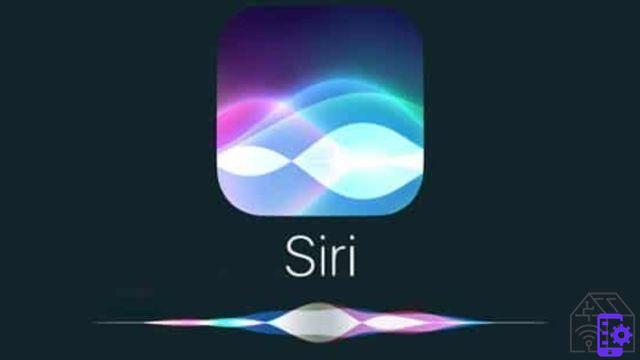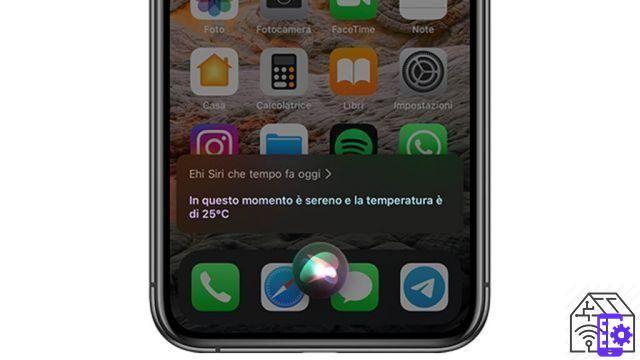
Over the past few months, our “How has it changed” column has dealt with the evolution of any object in our daily life. This time, however, we have decided to dedicate ourselves to something other than the washing machine or the brush. On the occasion of the XNUMXth anniversary of Crab of Apple, officially integrated into the iPhone 4S in October 2011, we chose to retrace the history of technology that paved the way for voice assistants. So let's find out how - and where - it all began.
Siri by Apple, the origin of the voice assistant
As anticipated, the story of Apple's voice assistant Siri began in October 2011. In reality, although many are unaware of it, the project dates back to at least February 2010, when Siri was conceived as an iOS App. Initially, the application was nothing more than the spin-off of a project developed by the International Center for Artificial Intelligence SRI with the support of the CALO project, run by the United States Department of Defense.
At that time the researchers Day Kittlaus, Tom Gruber e Adam Cheyer they were working on a project that would integrate multiple AI technologies in one cognitive assistant. Thus was born Siri, who was named after one of Kittlaus' collaborators in Norway. In the local language, in fact, Siri would mean "beautiful woman who leads to victory". A name that perfectly expresses the function of the voice assistant. At this point, what perhaps will surprise you to know is that the developers had planned to release Siri for BlackBerry and Android devices. In April 2010, however, Apple acquired the technology, making it de facto exclusive to the company.
Indeed, to lead the acquisition was Steve Jobs himself, who passed away on 5 October 2011, ie the day after the announcement of the iPhone 4S. Not surprisingly, in fact, the smartphone was released on the market with a beta version of Siri from Apple. And the new technology was presented like this by Phill Schiller, the company's marketing manager: “For decades, tech-savvy people have fooled us with this dream of being able to talk to technological devices to do things for us. But the moment never came. What we really want is to simply talk to the device and not rely on too basic and not at all natural syntax. There is a feature on the iPhone 4s that we call Siri “.

Siri's voice
How many times have you also wondered who was behind Apple's Siri voice? Many, we are sure. And here is the answer. Initially, and at least until September 2013, the voice assistant's voice was that of Susan Bennett, voiceover artist and former chorister of Roy Orbison and Burt Bacharach. Apparently, Bennet chose to provide voice support to the technology in 2005, unaware that it would be a milestone in the history of technology. In fact, the Cupertino company has never confirmed this news. Yet Bennett has never hidden that she has lent her voice to the well-known voice assistant. Indeed, quite the opposite.
In any case, Bennet wasn't Siri's only voice. Jon Briggs, a former tech journalist, lent his voice for the UK version of the app. He, too, unaware that one day his voice would be used all over the world, or almost. Over the years, Apple's voice assistant's voice has changed over and over again. iOS 11, in fact, introduced a more natural and fluid voice for Siri, so as to allow it to interact with users in a more "human" way. Finally, iOS 14.5 has even added the ability to choose the item you prefer for the virtual assistant. In short, over the course of ten years Siri has evolved quite a bit. But it has always kept faith with its function: to facilitate the experience of using Apple devices for users.
2011/2021, the evolution of Apple's voice assistant
Clearly, when Siri was first released in 2011 it wasn't nearly as advanced as it is today. Indeed, quite the opposite. Italian, eg, it was not among the supported languages from the voice assistant. As well as English, French and German, only introduced with iOS 5. And the features were far from advanced. For the first few months, in fact, users could only use Siri for write messages or emails, make appointments, play music, call a contact or interact with some Apps. But not everywhere. At an early stage, Siri faced a number of technical problems related to user localization. In the UK, for example, people could not take advantage of the option to ask where the nearest petrol station was.
Yet, from 2012 onwards, Apple has been working hard on optimizing its virtual assistant. Not surprisingly, with the release of iOS 6 - to be dated to 2012 -, the company adds the support of the Italian language, along with the Spanish and Chinese ones. In addition to this novelty, there was also the search function for restaurants and services, sports results, the trend of the financial markets, and the support for iPad and iPod Touch. And again we are talking about a rather "primitive" phase of Apple's Siri. Only with iOS 8, released in 2014, did they arrive the integration of Shazam and the ability to purchase songs on iTunes. Not to mention the introduction of the famous reminder phrase "Hey Siri", which dates back to the release of iOS 9 in 2019.
And then again, over the years, iOS updates have done nothing but improve the functioning of Siri, always adding new options useful for users. Such as the ability to call emergency contacts, to listen to your favorite songs passing exclusively through voice commands, or to use the virtual assistant even offline. In short, in ten years of history, Apple has done everything to make Siri the best in the industry. And it seems to have succeeded best. Especially considering the importance it holds for thousands of users around the world.
Discount Apple iPhone 13 (512GB) - Rosa
Apple iPhone 13 (512GB) - Rosa
- 6,1 "Super Retina XDR display
- Cinema mode with smart depth of field and automatic focus shift in videos
- Advanced 12MP dual camera system (wide angle and ultra wide angle) with Photographic Styles, Smart HDR 4, ...
 Apple iPhone 13 Pro (512GB) - Sierra Blue
Apple iPhone 13 Pro (512GB) - Sierra Blue
- 6,1 "Super Retina XDR display with ProMotion for an even smoother and more responsive experience Cinema mode with ...
- New 12MP Pro camera system (telephoto, wide-angle and ultra-wide angle) with LiDAR scanner, optical zoom ...
- 12MP TrueDepth front camera with Night mode and 4K HDR video recording with Dolby Vision




















![[Review] Samsung Powerbot VR7000: the robot vacuum cleaner from Star Wars](/images/posts/6bc44de38605b5c0fa12661febb1f8af-0.jpg)





